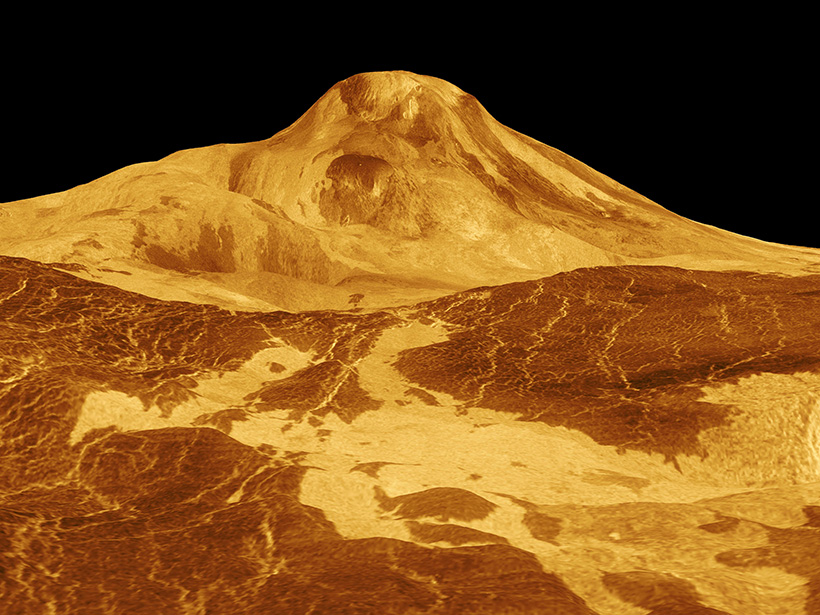Source: Journal of Geophysical Research: Planets
A translation of this article was made possible by a partnership with Planeteando. Una traducción de este artículo fue posible gracias a una asociación con Planeteando.
Out of all planets in the solar system, Venus has the most volcanoes. Much of the planet is covered in volcanic deposits that are less than 300 million years old, and volcanic activity has played a pivotal role in its history. Although the precise timeline of Venus’s volcanic past is still under debate and some data suggest that the planet may still have active volcanoes, the evidence remains inconclusive.
To date, researchers have had difficulty determining whether there are active volcanoes on Venus for multiple reasons. The planet’s atmosphere is corrosive and features high pressures and temperatures—above 450°C (842°F)—that make it inhospitable for the kinds of spacecraft that can last for years on Mars or the Moon. Meanwhile, thick clouds of sulfuric acid limit visible observation of the planet’s surface, so researchers have turned to other remote measurements, including radar collected by NASA’s Magellan spacecraft, to map it.
According to D’Incecco et al., a new methodology could finally help solve the mysteries of volcanic activity on Venus. As applied in a recent study, this approach combines geologic mapping of cooled lava flows from past eruptions with additional radar data from the Magellan mission. Specifically, it relies on measurements of the planet’s radar emissivity—a measure of how its surface interacts with and emits microwave radiation.
Different parts of Venus’s surface have different levels of emissivity that correspond to different properties of rocks, providing clues to their composition. In particular, recent research suggests that radar emissivity can be used to determine the degree of chemical weathering experienced by lava flows after they erupt and contact the harsh atmosphere. Such weathering happens over weeks or months, so emissivity could potentially help identify fresh lava flows.
The authors combined radar emissivity measurements with geologic mapping to compare three Venusian volcanoes: Maat Mons, Ozza Mons, and Sapas Mons. The findings suggest that some lava flows at Maat Mons might be relatively young.
Looking ahead, the same approach could be applied to additional Magellan data to further explore Venus’s volcanism. The methodology could also be important for future Venus missions that will provide higher-resolution radar emissivity measurements, including the European Space Agency’s EnVision mission and NASA’s Venus Emissivity, Radio Science, InSAR, Topography, and Spectroscopy (VERITAS) mission.
Alongside information from additional upcoming missions, including NASA’s DAVINCI+ (Deep Atmosphere Venus Investigation of Noble gases, Chemistry, and Imaging) mission and the Venera-D mission, the new strategy could finally help reveal which, if any, of Venus’s volcanoes are still active, as well as provide new insights into the planet’s volcanic past. (Journal of Geophysical Research: Planets, https://doi.org/10.1029/2021JE006909, 2021)
—Sarah Stanley, Science Writer
Citation:
Stanley, S. (2021), Is Venus volcanically active? New approach could provide an answer, Eos, 102, https://doi.org/10.1029/2021EO163155. Published on 15 September 2021.
Text © 2021. AGU. CC BY-NC-ND 3.0
Except where otherwise noted, images are subject to copyright. Any reuse without express permission from the copyright owner is prohibited.

